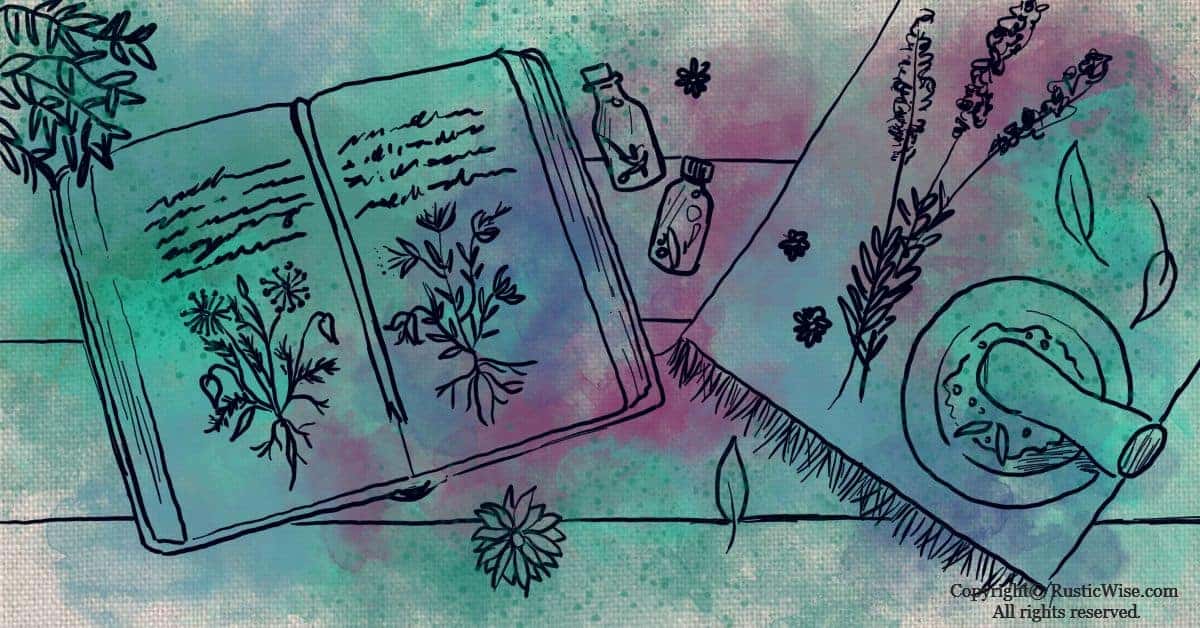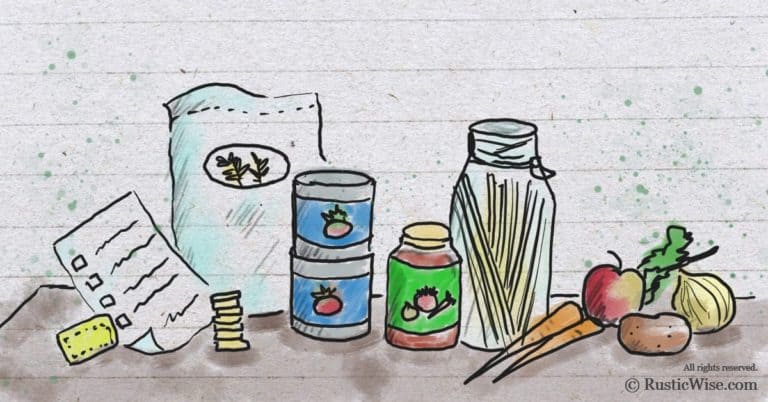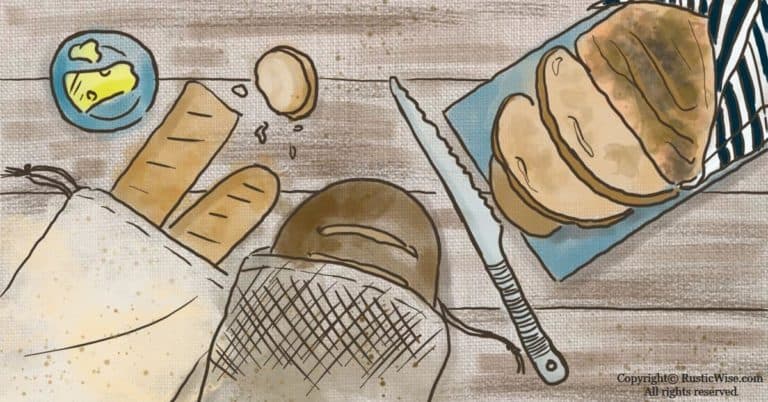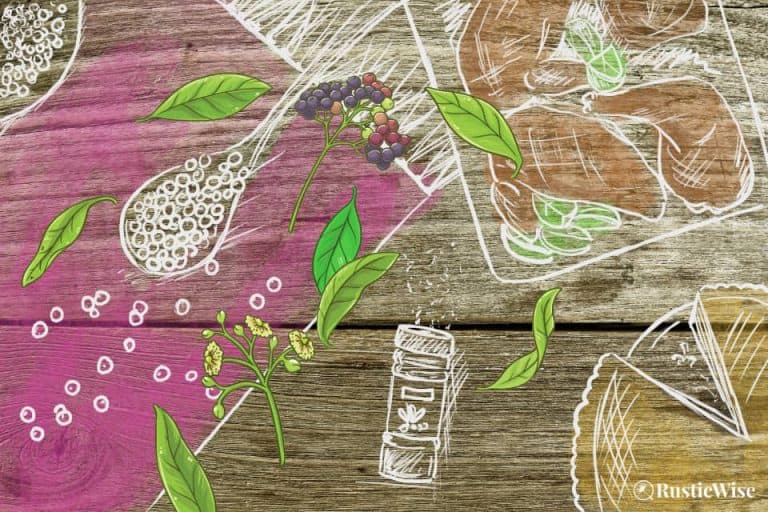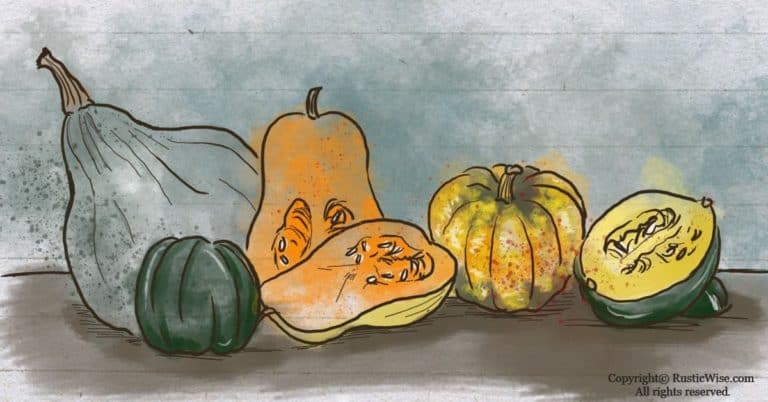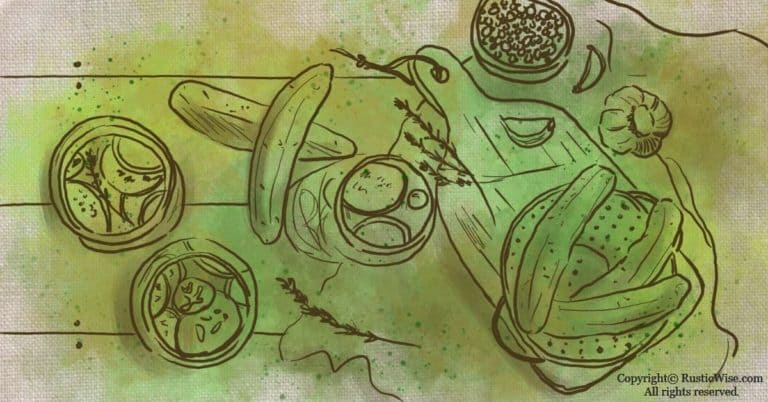A Brief Wild History of Herbs and Spices
If you think herbs and spices are simply good for adding flavor to culinary creations, you’re mistaken. The use of herbs and spices has shaped and influenced humankind since ancient times. The history of herbs and spices is anything but bland. They have been used in a variety of ways from healing ailments, signifying status, ceremonial purposes, dying fabric, and of course flavoring food.
We’ll discuss the history of herbs and their uses throughout history—from ancient to modern times!
What’s the difference between herbs and spices?
While the terms “herb” and “spice” are often used interchangeably, there are key differences.
Cambridge Dictionary defines a herb as, “a type of plant with a soft stem, used in cooking and medicine.”
On the other hand, a spice is, “a flavoring for food made from part of a plant, such as its fruit, seeds, or root, usually dried and often made into a powder.”
Herbs are soft-stemmed plants harvested typically for its leaves or flowers, and used for flavoring food, medicinal purposes, aromatic properties, and ornamental purposes. Herbs often grow in temperate climates. Examples of herbs include basil, cilantro, lavender, and rosemary.
Spices generally have a more pungent flavor and often come from other parts of plants including bark, buds, flowers, root, seeds, and stems. Many spices grow in tropical regions and are dried or ground. A few examples of spices are cardamom, cinnamon, and nutmeg.
And yes, there are a few notable exceptions in which one plant produces both a herb and a spice. The cilantro plant’s leaves are harvested as a herb, while it’s seeds are collected as a spice, and called coriander. Dill’s leaves are called dill weed, and it’s seeds are used as a spice (dill seeds).
A brief timeline of the history of herbs and spices
The following is by no means an exhaustive history of herbs and spices—rather it’s a brief summary of a few notable events and people (1).
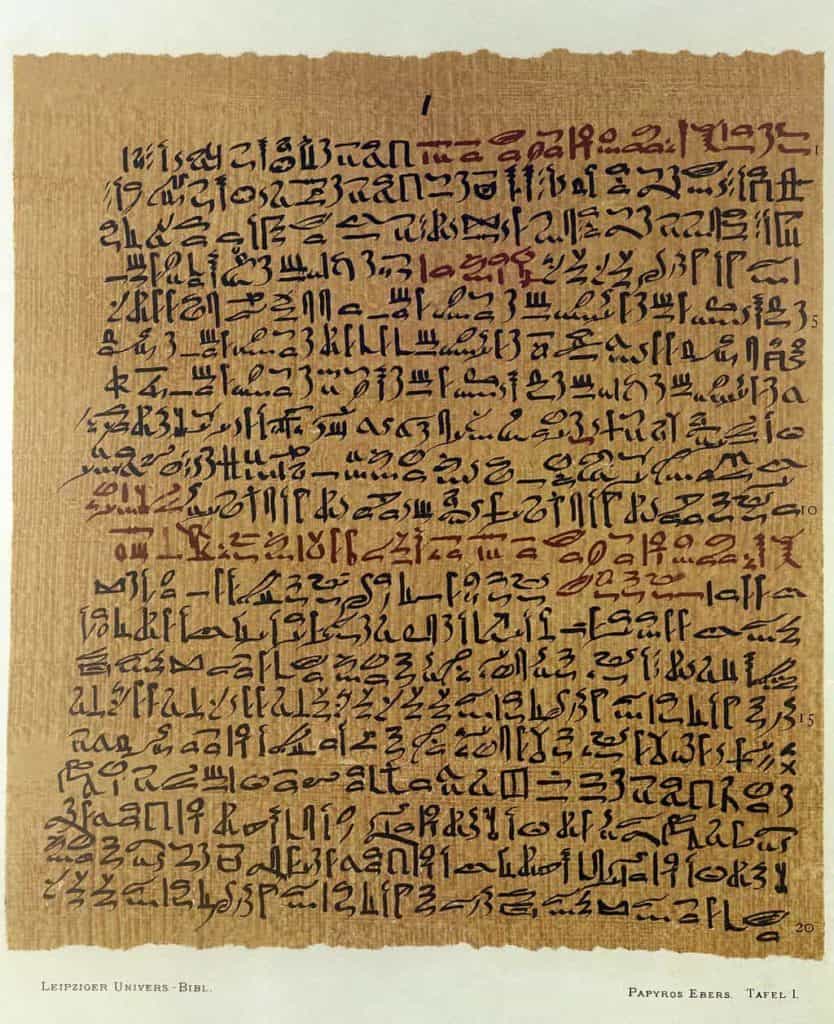
Credit: Wikimedia Commons
- 5000 BC – Evidence of spices used in the Middle East.
- 3000 BC – Spices used for ceremonial purposes, including embalming in Egypt.
- 2000 BC – Arabia’s dominance of the spice trade lasts for over 2,000 years.
- 2700 BC – A catalog or herbal* created by Chinese Emperor Shen Nung documents over 365 medicinal plants.
- 1500 BC – The Egyptian Ebers Papyrus is one of the oldest and most well known medical tomes on herbs and their uses. It lists over 700 medicinal plants that were used for healing as well as rituals such as embalming.
- 1500 BC – Rig Veda – an ancient Hindu scripture which describes over 1,000 medicinal plants.
- 1250 BC – Asclepius, an Egyptian-born Greek herbalist and healer works with his daughters, Panacea and Hygeia. They combined the healing powers of herbs along with “magical” rituals.
- 1000 BC – Spices are used in Palestine as anointing oils and incense.
- 1000 BC – Ancient Egyptian kings believed garlic would provide strength and thus fed it to workers and slaves to fuel them up when building the pyramids.
- 500 BC – Greeks incorporate spices and herbs into their diet as medicine.
- 460–377 BC – Hippocrates, the father of modern medicine imparted a scientific order into traditional plant remedies. He categorized and expanded upon over 400 medicinal herbs including basil, horehound, rue, and sage.
- 200 BC – Cloves from Spice Islands are imported from China.
- 1st Century AD – Documented extravagant use of spices by Roman Emperors (see section on Saffron below).
- 1st Century AD – Rome develops a long-lasting spice trade with India for over 300 years.
- 1st Century AD – Greek doctor and botanist Pedanius Dioscorides, writes an important herbal called De Materia Medica (On Medical Material). This five-volume tome of herbal medicine and other medical practice expands upon the groundwork laid out by Hippocrates.
- 1035 – Avicenna, a Muslim doctor wrote the Canon of Medicine which was used a reference book until 1650.
- 1100 – The Crusades spurs interest and demand for spices.
- 1250 – Europeans use spices as aphrodisiacs.
- 1350 – Europeans use spices as medicines during period of Black Death.
- 1350 – Venice and Genoa serve as the epicenter of the European spice trade.
- 1450 – Christopher Columbus discovers spices in the Caribbean Islands.
- 1450 – The invention of the printing press helps to spread herbal knowledge.
- 1521 – Venice’s wealth from spices helps to finance the Renaissance.
- 1545–1612 – John Gerard a botanist, horticulturist, and surgeon publishes Herball in 1597. He grew over 1,000 plants at his home in London.
- 1567–1650 – John Parkinson, an apothecary/gardener/herbalist publishes two herbals: Paradisi in Sole Paradisus (Park-in-Sun’s Terrestrial Paradise), and Theatricum Botanicum (Theatre of Plants).
- 1616–1654 – Nicholas Culpeper, a famed herbalist translated the medical tome, London Pharacopeia from Latin to English to make it more accessible to everyday people including pharmacists and apothecaries. He links herbal usage with astrology, the movements of the stars and planets.
- 1650 – Holland gains control of the spice trade and reigns from the East Indies.
- 1700s – Europeans begin to favor chocolate, coffee, and tobacco over spices.
- 1750 – Holland destroys many spices in an effort to artificially drive up prices.
- 1800s – America’s lucrative pepper trade with the East Indies makes a select few “millionaires.”
- 1850s – Sugar becomes the preferred flavor as spices gradually lose prominence.
*Ancient books about herbs were called “herbals.”
Egyptians
Herbs and their many uses by herbalists and other healers have been in practice since ancient Egyptian times. Egyptians believed the fight between sickness and health was one rooted in conquering evil forces. Often incantations were chanted while preparing medicines.
Schools for herbalists date back to 3000 BC.
The Egyptian Ebers Papyrus (dating back to 1500 BC) is one of the oldest and most well known medical tomes on herbs, spices, and their uses. It lists over 700 medicinal plants that were used for healing as well as rituals such as embalming (which involved the use of lavender, thyme, and mint).
A few notable spices mentioned in the Ebers Papyrus include anise, cassia, cinnamon, mustard, and saffron. It’s interesting that both cassia and cinnamon are not native to Egypt, but rather Asia; this implies spice trading was in practice thousands of years ago.
Garlic and onions played a central role in Egyptian herbal medicine. Garlic cloves were found in the tomb of King Tutankhamen.
Ancient Egyptian kings believed that garlic and onions boosted endurance and strength. This is why workers and slaves were fed garlic to fuel them up when building the pyramids.
Raw garlic was often prescribed to asthmatics, and onions were given as a digestive aid. Sometimes a clove of garlic was peeled, wrapped in cheesecloth and pinned under clothing to ward off common cold and flu.
Mandrake was used as an aphrodisiac. It’s worth noting the use of mandrake appears in the Bible: mandrake was used to help Rachel bear a child for Jacob in the Old Testament.
Coriander was another commonly used spice. Egyptians used it in dishes to calm the digestive system, reduce flatulence, and as an all-around soothing agent.
Cumin, grown natively in Egypt, was often paired together with coriander in dishes for flavor. It was sometimes ground into powder, mixed with wheat, and applied directly to aching joints.
Many leaves harvested from various locally-grown trees such as acacia, sycamore, and willow were made into poultices.
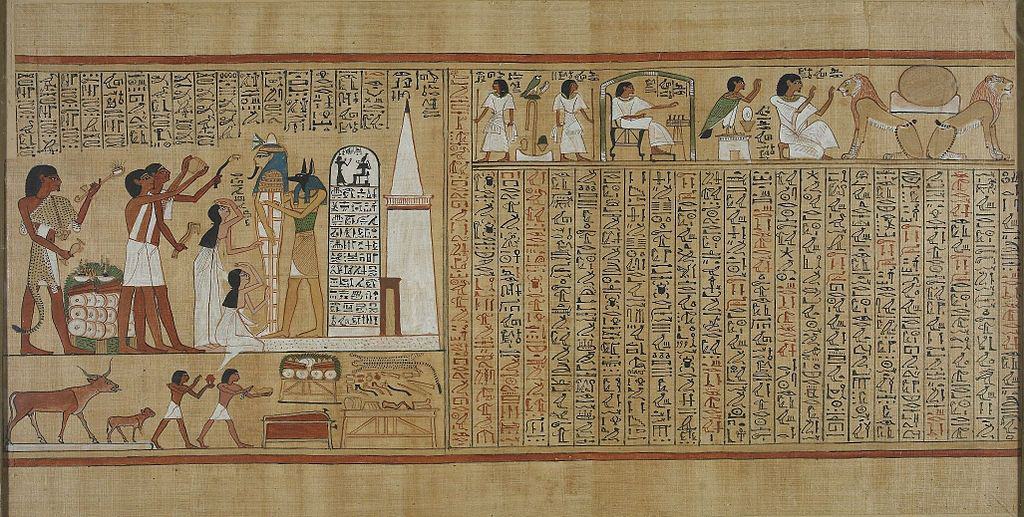
Credit: Hunefer, Public domain, via Wikimedia Commons
Greek and Roman use of herbs and spices
Many herbs and spices are steeped in symbolism.
Greeks and Romans revered the laurel tree (Laurus nobilis). Its foliage was considered sacred and was used to create garlands presented to honor warriors, poets, and other dignitaries.
In 490 BC, fennel (along with parsley and dill), was used to create garlands to celebrate the victory of the Battle of Marathon (marathon means “a place of fennels” in Greek).
Rosemary coveted for its aromatic properties, was used for many purposes. It was planted as a fragrant shrub, burned at sacrifices, used as a part of a love potion, made into a healing salve, and scattered on floors (think of it as a natural “room spray.”)
Greeks and Romans would use this practice of “strewing herbs” across floors to mask undesirable odors—this practice spread to Europe. Common strewing herbs include lavender, mint, and thyme.
The most prized aromatic herb in ancient times became saffron, a brightly-colored reddish-orange herb plucked from the stigma of saffron crocus flowers. You would need to pick roughly 65,000 blooms to produce one pound of saffron.
Understandably, saffron came to represent wealth and status as only the wealthy could afford to use saffron to dye clothing, use in cooking, and add scent to banquet halls.
Roman Emperor Nero requested that saffron water be sprinkled on the roads whenever he returned to the city.
Dioscorides and Galen, are two famous Greek doctors during this time. Galen served as the personal doctor of Marcus Aurelius. Galen used imported rhubarb from China to treat ailments such as cramps.
History of herbs and spices in the Middle Ages
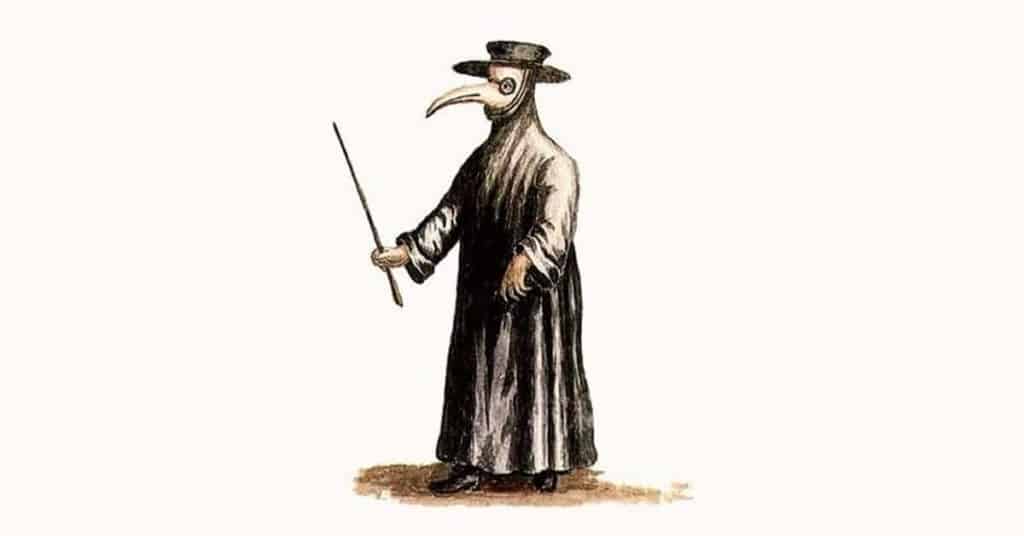
Credit: National Center for Biotechnology Information, U.S. National Library of Medicine
In the Middle Ages (500 to 1400–1500 AD), European monks tended large herb gardens, who together with nuns, administered care for the sick using various plant-based medicines.
Prior to surgery, patients inhaled a sponge soaked in a potent herbal mixture consisting of hemlock, henbane, ivy, mandrake, and opium—which was used as a painkiller (and sometimes a patient-killer too, if used incorrectly!).
In the 12th century, Abbess Hildegarde of Bingen and Abbot Alexander Neckam from the Augustinian abbey at Cirencester documented the use of medicinal herbs. Hildegarde was a pioneer in what is now known as holistic healing—the merging of spiritual practices with plant-based, natural cures.
During the Middle Ages, many still followed Hippocrates’ beliefs of the four humors: yellow bile (choleric), blood (sanguine), phlegm (phlegmatic), and black bile (melancholic).
An imbalance between the four different humors is believed to be the source of illness. Any excess of a particular humor had to be purged in various manners (bleeding, cupping, leaching) in order to regain balance.
If there was a plant that could be characterized by this period, it would be the rose. The sweet smell of rosewater was brought back from the Middle East and widely used. Rose petals were often added to bath water. The upper classes set out bowls of rosewater for guests to cleanse their hands after having meals.
The period of the “Black Death” swept through Europe in the 13th and 14th centuries. The Black Death was so-named after a mysterious illness caused by painful black boils appearing on bodies of the afflicted.
Civilians burned rosemary branches at home in an attempt to ward off the Black Death.
Physicians tried various methods such as lancing boils, bloodletting, burning aromatic herbs, and adding rosewater to baths.
Doctors wore beaked masks to protect themselves from the mysterious disease. The Black plague was believed to be airborne so doctors wore protective clothing, eye gear, and a long beak-like mask filled with theriac.
Theriac is a special mixture of over 55 herbs including cinnamon, honey, myrrh, and viper flesh powder believed to provide protective powers to the doctors before the plague could reach the wearer’s nostrils.
Ayurvedic medicine
Originating in India over 3,000 years ago, Ayurvedic medicine is still practiced today. Ayurvedic principles combine both preventative and curative practices tailored to fit the individual needs of each patient.
Preventative measures include good personal hygiene, exercises including yoga, regular use of healthy herbs in teas and as part of a regular diet. Curative measures involve a variety of herbal remedies and physiotherapy.
Traditional Chinese Medicine (TCM)
The practice of TCM dates back at least 23 centuries and is one of the oldest medicinal practices still in use today. The fundamental principles center around the concept of yin and yang, and achieving a balance between these two forces.
There are many ancient practices used in TCM including acupuncture, acupressure, cupping, and moxibustion. And of course, there is ample use of healing herbs aimed to produce the desired energy vibration that stimulates or soothes various energies within the patient’s body.
Each plant or herb has a unique purpose, and when combined with other herbs, aims to achieve harmony.
Many plants contained useful alkaloids. For example, a common compound used to treat asthma, ephedrine, was first identified in a Chinese herb called mahuang.
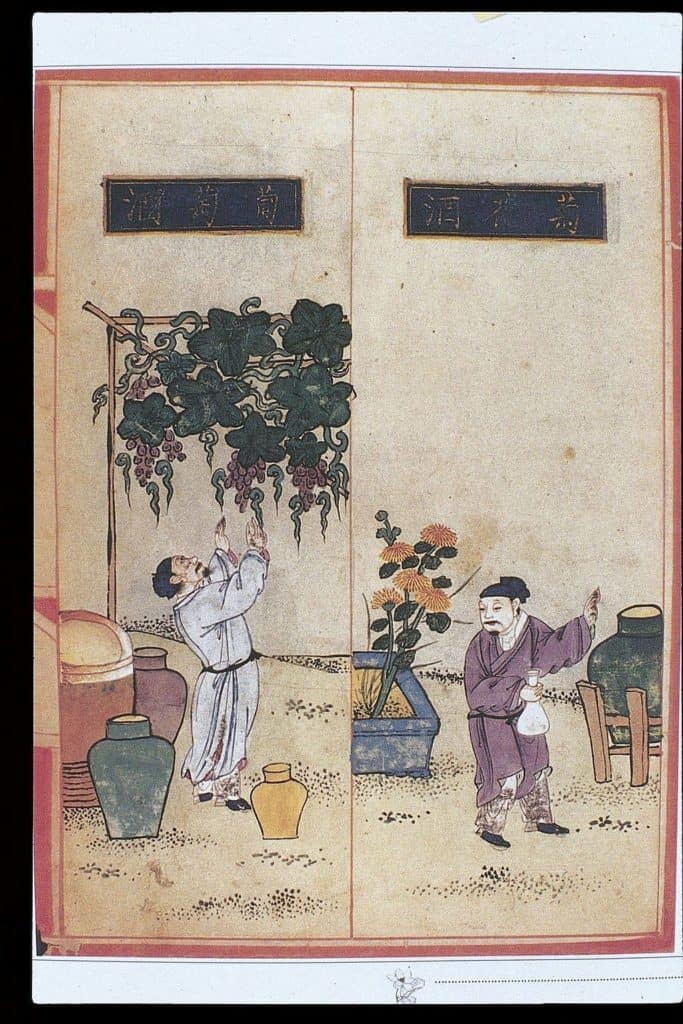
Credit: Anonymous/Unknown author, CC BY 4.0, via Wikimedia Commons
Other ancient uses of herbs and spices
Besides culinary purposes or healing properties, herbs and spices have been used in many interesting ways throughout the centuries.
Herbs and spices as currency
Pepper was originally a pricey and coveted spice. In the fifth century, invaders demanded 3,000 pounds of pepper as a ransom for not attacking Rome.
Sometimes, landlords would accept payment in peppercorns in lieu of real money; this was known as a “peppercorn rent.”
Chocolate pods were at one point highly prized by the Aztecs—these too were accepted and used as currency.
Status
Over the years, spices have been used as a status symbol by wealthy and powerful parties to assert their position in society. When important guests arrived, they were often treated to extravagant use of expensive and exotic spices added to both food and drink.
We mentioned above that saffron was one of the most “prestigious” spices as it was so labor-intensive to procure, and thus was only affordable to the wealthy.
Aphrodisiac
Many herbs, flowers, and spices have been used over the years to arouse and stimulate the senses.
- Cardamom: A popular Asian and Middle Eastern spice. The Chinese court used it to create a fragrant bath.
- Cloves: Contains a compound called eugenol which is thought to stimulate sexual feelings.
- Ginger: Contains gingerols and zingiberene that have long been used thought to have seductive properties.
- Nutmeg and mace: When combined in small doses, they may stir up romantic feelings; when overdone, they may cause hallucinations!
- Pepper: If you want to put some pep in your step, pepper contains piperine, a compound thought to improve sexual function.
- Saffron: Contains picrocrocin, a compound thought to arouse erotic feelings.
- Vanilla: There’s something about vanillin which may create feelings of romance.
A few notable herbs and spices
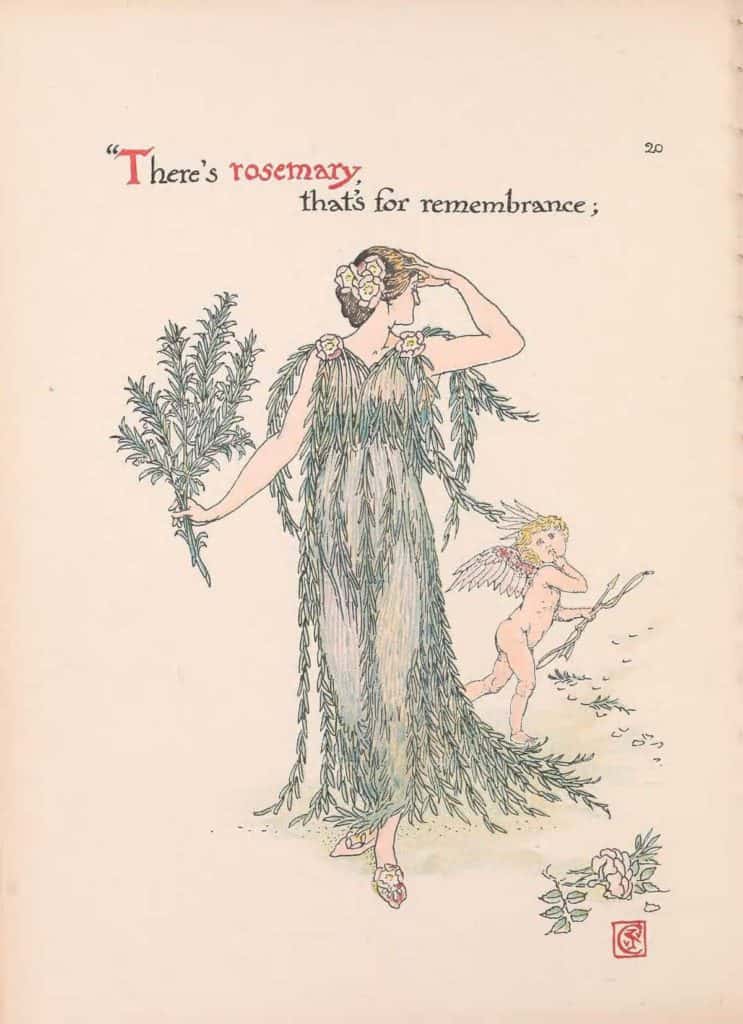
Credit: Biodiversity Heritage Library / Flickr
While there are countless important herbs and spices throughout history, here are a few notable ones (1).
Herbs and spices in modern times
Over the years as sugar, coffee, chocolate, and tobacco gained in popularity, the demand and desire for herbs and spices fell.
As for herbs used for medicinal purposes, scientists and doctors began extracting medicinal substances from plants such as morphine from poppies to produce more shelf-stable medicines. The volatile oils in plants is mostly what gives them their medicinal properties. Oil from pennyroyal when applied to skin acts as an insect repellent; thymol from thyme acts as an antiseptic.
While knowledge and study of plants and their many uses has fallen out of vogue in recent decades as society shifted to a more synthetic way of living, it’s making a resurgence once again.
Today, herbs are still commonly used in herbal dietary supplements. The Nutrition Business Journal (NBJ) states that the U.S. continues to see an upswing of sales of herbal dietary supplements. Sales in 2019 rose by 8.6 percent from 2018; and, more than $9.6 billion was spend on herbal supplements in 2019.
Often the answers or cures we seek for common ailments may be growing outside our backdoor. Indoor and outdoor herb gardens are becoming more common again as we strive for a more natural and self-sufficient lifestyle.
👉 If you like this post, see our Rustic Kitchen section. 🍽️
Would you like more timeless tips via email?
Fun tips to help you live an independent, self-sustaining lifestyle. Opt-out at any time.


References
- Herda, DJ (2020). Your Indoor Herb Garden: Growing and Harvesting Herbs at Home. New Society Publishers. pp. 12–43. ISBN 9780865719330.
- UCLA History & Special Collections, Louise M. Darling Biomedical Library, Spice Timeline, https://unitproj.library.ucla.edu/biomed/spice/index.cfm?spicefilename=TimelineHistorySpiceTrade.txt&itemsuppress=yes&displayswitch=0. Accessed July 2021.
- Britannica, Shennong, https://www.britannica.com/topic/Shennong. Accessed July 2021.
- The Pennsylvania State University, Herb and Spice History, https://extension.psu.edu/herb-and-spice-history. Accessed July 2021.
- Abou El-Soud, Neveen. (2010). Herbal medicine in ancient Egypt. Journal of Medicinal Plants Research. 4. 82-86. https://www.researchgate.net/publication/228634623_Herbal_medicine_in_ancient_Egypt. Accessed July 2021.
- Hajar R. (2012). The Air of History (Part II) Medicine in the Middle Ages. Heart views : the official journal of the Gulf Heart Association, 13(4), 158–162. https://doi.org/10.4103/1995-705X.105744 https://www.ncbi.nlm.nih.gov/pmc/articles/PMC3573364/. Accessed July 2021.
- Blakemore, Erin (12 March 2020). “Why plague doctors wore those strange beaked masks,” National Geographic. Accessed July 2021.
- Britannica, Ayurveda, https://www.britannica.com/science/Ayurveda. Accessed July 2021.
- Britannica, Traditional Chinese medicine, https://www.britannica.com/science/traditional-Chinese-medicine. Accessed July 2021.
- UCLA History & Special Collections, Louise M. Darling Biomedical Library, Spices as Aphrodisiacs, https://unitproj.library.ucla.edu/biomed/spice/index.cfm?spicefilename=Aphrodisiacs.txt&itemsuppress=yes&displayswitch=0. Accessed July 2021.
- American Botanical Council, HerbalGram, US Sales of Herbal Supplements Increase by 8.6% in 2019, https://www.herbalgram.org/resources/herbalgram/issues/127/table-of-contents/herbalgram-127-herb-market-report-american-botanical-council/. Accessed July 2021.

Author: Theresa Tesolin
Theresa is co-founder of RusticWise. She helps people unleash their inner DIY spirit by encouraging them to get dirty and make or grow something from scratch.

